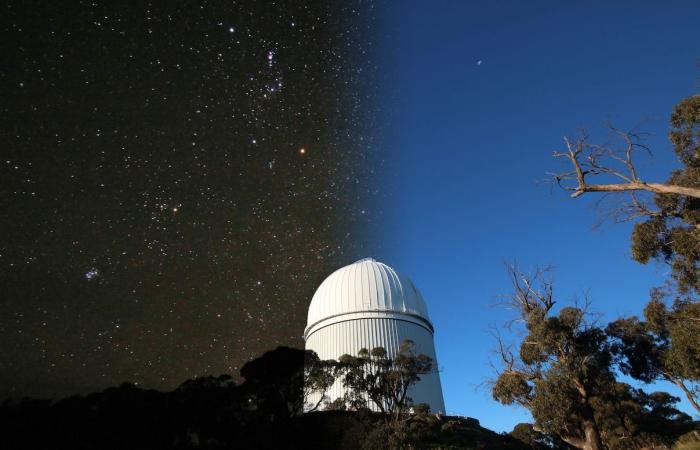These are just a few of the astronomical questions that are likely to be answered following today’s release of ‘GALAH DR3’, the largest set of chemical stellar data ever compiled.
The data, which comprises more than 500 GB of information from more than 30 million individual measurements, was collected by astronomers like Sarah Martell from UNSW and colleagues from the ARC Competence Center for All-Sky Astrophysics in 3 Dimensions (ASTRO 3D). They used the Anglo Australian Telescope (AAT) at the Australian Astronomical Observatory in Siding Spring in rural New South Wales.
The publication is the third from the Galactic Archeology with HERMES (GALAH) project, which aims to investigate star formation, chemical enrichment, migration and fusions in the Milky Way. This is done with an instrument called HERMES (High Efficiency and Resolution Multi-Element Spectrograph), which is connected to the AAT.
The new data covers 600,000 stars and brings the project very close to its goal of measuring one million.
“It’s a bit like a galactic version of the game Cluedo,” said ASTRO 3D’s Sven Buder, a research fellow at Australian National University.
“The chemical information we’ve gathered is more like star DNA. We can use them to determine where each star came from. We can also determine their ages and movements and provide a deeper understanding of the evolution of the Milky Way. ”
And just like in Cluedo, the information can be used to get to the bottom of mysterious events.
“For example, while we mainly monitor our solar environment, we have found more than 20,000 stars that do not have the same chemical composition or that our sun and its neighbors are aging,” said Dr. Buder.
“We know that the shape of the Milky Way changed drastically about eight billion years ago when it collided with another, smaller galaxy that contained millions of stars. We have now used the stellar DNA to identify some of the prime suspects in the attack. These stowaways are so different that they can only come from somewhere else. ”
Solve cosmological puzzles
As with the previous two data releases from the GALAH survey, the information is freely available to astronomers around the world.
“It is very important for astronomical research to make large amounts of data such as GALAH DR3 generally available,” explains Associate Professor Sarah Martell from UNSW and ASTRO 3D.
“Since the beginning of the GALAH project, we have focused on creating a data set that can answer our questions about the history of the Milky Way and many others. I’m excited to see what our international colleagues will do with GALAH DR3. ”
The previous data release of the GALAH project – known of course as DR2 – took place in 2018. It has sparked a number of significant discoveries related to the evolution of the Milky Way, the existence of exoplanets, hidden star clusters, and much more.
Another puzzle that will probably soon be solved thanks to new knowledge is called the “Cosmological Lithium Puzzle”.
Lithium was one of the elements that were formed during the Big Bang. It is also destroyed by some types of stars. However, modeling to estimate their frequency has always been neglected – whereby the calculated sum does not agree with the empirical data.
GALAH DR3 seems to offer a solution.
“Basically, many of the oldest stars burned a large part of the Big Bang lithium, so our measurements for this element are lower than the amount that was originally synthesized in the early universe,” said ASTRO 3D researcher Dr. Sanjib Sharma from the University of Sydney.
“At the same time, we discovered that one type of star known as evolved giants should by now burn out almost all of its lithium, but many of them have a lot more of it than we expected. The GALAH data helps us find out why. ”
More than 100 scientists are working on the GALAH project. You work at several universities in Australia, Italy, Great Britain, Slovenia, the USA, Hungary, Sweden, the Netherlands and Germany.
The GALAH DR3 dataset is available online.
These were the details of the news Play detective on a galactic level: A huge new data set... for this day. We hope that we have succeeded by giving you the full details and information. To follow all our news, you can subscribe to the alerts system or to one of our different systems to provide you with all that is new.
It is also worth noting that the original news has been published and is available at de24.news and the editorial team at AlKhaleej Today has confirmed it and it has been modified, and it may have been completely transferred or quoted from it and you can read and follow this news from its main source.

